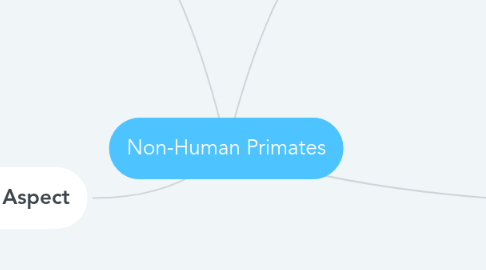
1. Social Aspect
1.1. Social Strategies
1.1.1. Competition
1.1.1.1. Male
1.1.1.1.1. Males want offspring, want the best female
1.1.1.1.2. Intimidation
1.1.1.1.3. Fighting (last resort)
1.1.1.2. Female
1.1.1.2.1. Resources
1.1.1.2.2. Ensure survival of offspring
1.1.1.2.3. Want the best male available
1.1.2. Cooperation
1.1.2.1. Ritualized behavior
1.1.2.2. Eases tension
1.1.2.3. Altruistic behavior
1.2. Factors that Influence Residence Patterns
1.2.1. Food distribution
1.2.2. Carrying capacity
1.2.3. Group size needed to avoid predators
2. Importance of Studying Non-Human Primates
2.1. Cross-species perspective
2.2. Insight into human behavior
2.3. Can help us infer fossil record
2.4. Better understand human behavior
2.5. Better understand human evolution
3. Taxonomy
3.1. Strepsirhines
3.1.1. Lemur
3.1.1.1. Madagascar
3.1.2. Loris
3.1.2.1. Tropical Africa, Southeast Asia
3.2. Haplorhines
3.2.1. Hominidae
3.2.1.1. Lesser Apes, Great Apes, Humans
3.2.2. Anthropoids
3.2.2.1. Platyrrhines
3.2.2.1.1. New World Monkey ( S. America, C. America)
3.2.2.2. Catarrhines
3.2.2.2.1. Old World Monkey (Asia, Africa
4. Species Concepts
4.1. Biological
4.1.1. Groups of actually/potentially interbreeding natural populations
4.2. Ecological
4.2.1. Defines species based on uniqueness of ecological niche
4.3. Morphological
4.3.1. Defines species based on phenotypic characteristics
